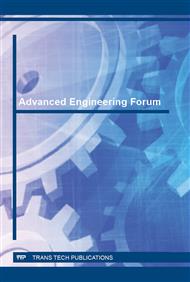p.3
p.19
p.23
p.29
p.36
p.46
p.59
p.67
Studies in Effect of Nano Aluminium Trihydroxide Concentration on Flame Retardant Properties of Ethylene Propylene Diene Rubber
Abstract:
The science and technology of synthetic polymers has undergone explosive growth in the last few decades and the number of different polymeric materials in our built environment increases almost daily. All organic polymers burn and thus entail some measure of fire hazard in some situations. With increasing awareness of the nation’s fire problem it has become evident that the problems associated with flammability of polymeric materials must be attacked and solved. With the large number of polymers in commercial use. Problems of flammability and fire retardation are complex and multifaceted properties have to be developed, or existing polymers must be modified by addition of fire-retardant compounds. EPDM Rubber has many attractive properties such as low shrinkage, ease of cure and processing, excellent moisture, solvent and chemical resistance, good mechanical and electrical properties, as well as ease of modification to optimize the properties. However flammability is a major limitation in area requiring high flame resistance. Aluminum trihydroxide (ATH) due to its flame retardancy property is widely used as non reinforcing filler in wires and cable compound along with silica and carbon black. In this study carbon black is fully replaced by nano ATH to make environment friendly rubber products. However, the dispersion of nano particles in rubber is remarkably poor and hence techniques like melt mixing, solution mixing and master batching of nano ATH with EVA (Ethylene- vinyl acetate) are used to improve the dispersion of nano ATH particles in EPDM elastomers. In the current study we have used melt mixing for improving the dispersion of nano ATH and excellent results were obtained with optimum loading of nano ATH.
Info:
Periodical:
Pages:
3-18
Citation:
Online since:
October 2015
Price:
Сopyright:
© 2016 Trans Tech Publications Ltd. All Rights Reserved
Share:
Citation:


